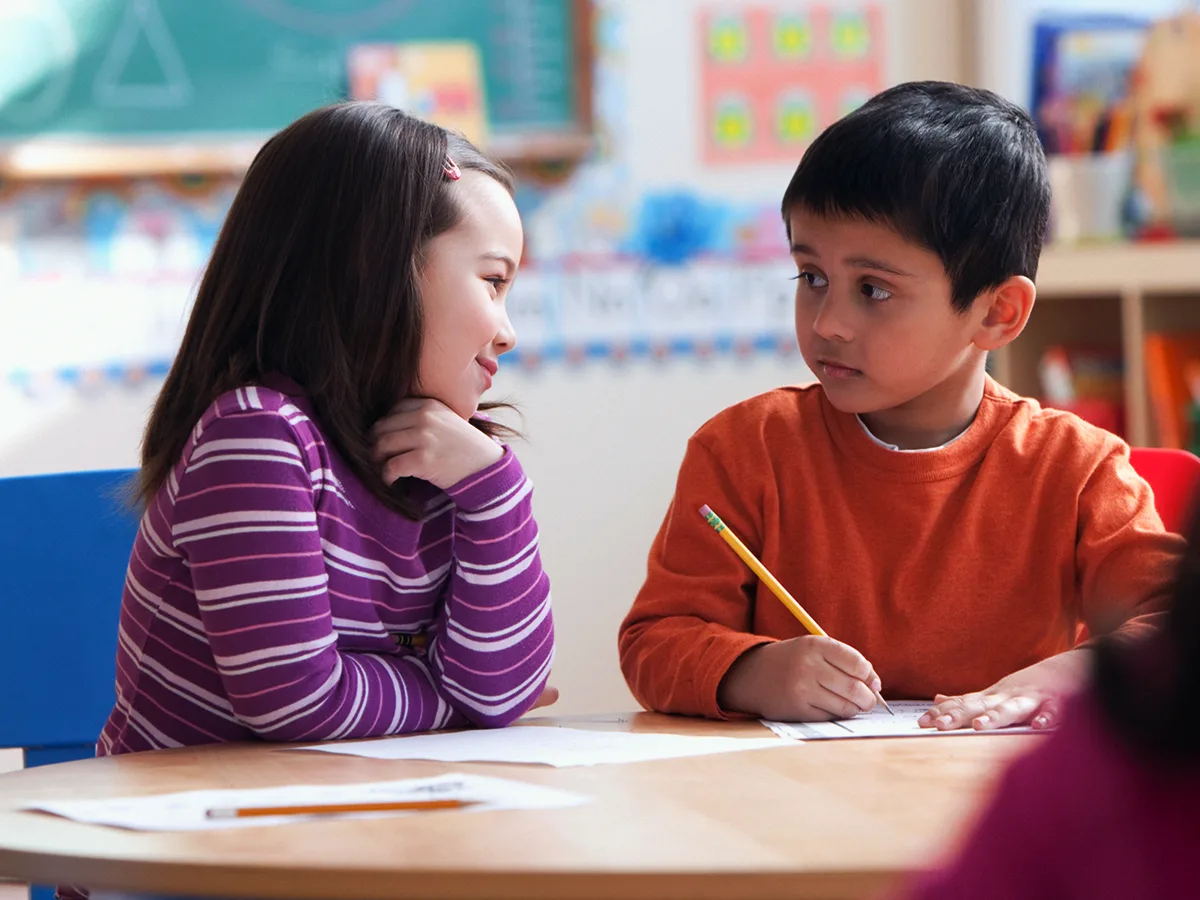4 types of social cues

At a glance
Social cues are the signals people send through body language and expressions.
Many kids with social skills issues have trouble picking up on social cues.
When kids miss social cues, they can misunderstand people and situations.
When people roll their eyes, wink when they’re saying something, or use a sarcastic tone of voice, most kids will get the message. But kids who have social skills issues often miss those nonverbal cues. And that can lead them to misunderstand people and misread situations. Learn about the four types of social cues.
1. Facial expressions
How we use them: We use our faces to express how we’re feeling, whether or not we intend to. We raise our eyebrows when questioning something, smile wide when happy and sulk when we feel angry.
Why they matter: Facial expressions can be the most obvious social cues. It’s hard to hide an emotion when it’s “written all over your face.” And it can be frustrating when someone fails to “read” how we’re feeling.
What can happen when kids miss them: In the hallway, Leah spots her favorite teacher, who’s talking sternly to another student. Leah runs toward him, yelling, “Hi Mr. Lenz! Mr. Lenz, hey!” He turns to her and furrows his eyebrows and raises a finger at her to say “Just a minute.” But Leah keeps running his way.
2. Body language
How we use it: Sometimes an emotion is so strong, it affects the way we hold our body. We slump our shoulders when tired, shrug when we don’t know an answer and add a skip to our step when we’re happy.
Why it matters: Body language can be involuntary or done on purpose. Either way, it’s an important way of communicating. Some kids can totally misunderstand what’s being said. And people can feel annoyed when the signs they’re giving off with their body are ignored.
What can happen when kids miss it: At recess, Hillary asks Ava twice to play tag with her. When Hillary approaches Ava a third time, she doesn’t notice Ava crossing her arms and shaking her head.
3. Voice pitch and tone
How we use it: Certain moods call for high or low voices and fast or slow speech. When we need to get something important across, we talk quickly and urgently. When we ask a question, we raise the pitch of the last word or two.
Why it matters: Changes in voice can sometimes change the meaning of what’s being said. But some kids take speech too literally and miss the nuances. They may not get the joke or when kids are being mean.
What can happen when kids miss it: In gym, Noah asks if he can be on Dan’s basketball team. Dan says sarcastically, “Yeah, you can play with us,” and walks away. Noah follows Dan, thinking he said yes.
4. Personal space (also known as physical boundaries)
How we use it: If we’re interested in someone, we tend to move closer (but not too close). When we take a step away, we signal that we’d rather keep our distance.
Why it matters: Standing too close to (or too far from) someone can be awkward. It can also communicate something kids don’t mean to say. Keeping an appropriate distance or boundary is especially difficult for kids with executive functioning issues.
What can happen when kids miss it: At her birthday party, Clarice reaches out for a hug from her friend Molly. Molly scoots back. Clarice gives her a hurt look, thinking that Molly has just rejected her.
Kids with social skills issues and other learning and thinking differences may have trouble understanding facial expressions, body language, tone and pitch changes and personal space. But you can help your child learn how to notice and interpret social cues. Learn more about the skills your child needs.
Key takeaways
Social cues are forms of communication that help kids “read” other people and react appropriately.
Social cues include expressions, body language, tone of voice and personal space or boundaries.
There are ways to help kids learn to read social cues.

